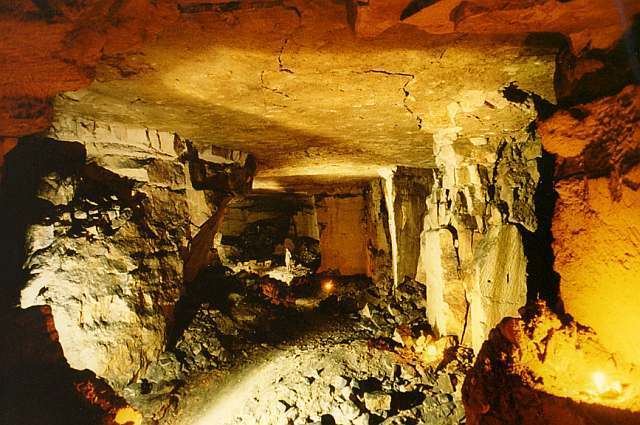Area of Search Avon Area 40 ha | Grid reference ST793662 Notification 1974 | |
 | ||
Interest Geological and Biological | ||
Brown s folly tower mine and monkton farleigh tunnel
Brown's Folly (grid reference ST793662) is a 39.9 hectare biological and geological Site of Special Scientific Interest (SSSI) near the village of Bathford in Somerset, notified in 1974. Also known as Farleigh (or Farly) Down Stone Quarry, it is operated as a nature reserve by the Avon Wildlife Trust (AWT). The site is named after a folly tower of the same name. It was built in 1848 and has been designated as a Grade II listed building.
Contents
- Brown s folly tower mine and monkton farleigh tunnel
- Brown s folly mine a brief look p50 hd
- Old quarries
- Access
- Conservation
- References
Brown's Folly is situated on steep west-facing slopes which overlook the River Avon. The calcareous soils have developed on Lower Lias clays, fuller's earth and oolitic limestone strata of Jurassic age. The local geology is of major importance in the context of the British Bathonian stratigraphy.
The site includes the remains of quarries used for the extraction of Bath Stone. These provide a rich variety of wildlife habitats. Downland flora has covered the spoilheaps where wild thyme, harebell and nine species of orchid (including the rare Fly Orchid) are found. Yellow Bird's-nest occurs here. The damp cliff faces support a variety of ferns, fungi and spiders. Pockets of ancient woodland on the lower slopes are home to woodpeckers, and unusual plants such as Bath asparagus.
Brown s folly mine a brief look p50 hd
Old quarries
The old underground quarries are used for roosting by the Greater Horseshoe Bat, and five other bat species are present at the site. The main bat roost area is clearly marked on the survey created by the SMCC, and everyone is asked to avoid the area. Boris, the oldest Greater Horseshoe Bat ever recorded in Britain, was discovered at Brown's Folly in January 2000. The underground workings themselves are of great speleological and historical interest. They are extremely well decorated and contain many delicate stalactites and examples of gull formation (caves features formed by land slippage). The quarry workings provided stone for the façade of Buckingham palace.
Access
In 2000, access was unilaterally withdrawn by the Avon Wildlife Trust pending the results of a mine inspector's report on the safety of the mines. This report was required because of the Health and Safety at Work Act which affects employees and volunteers of Avon Wildlife Trust who might have to enter the mine to count the bats. These legal requirements do not affect leisure access by cavers. Prior to 2000, access to the mine was controlled by the Council of Southern Caving Clubs and cavers coexisted with a thriving bat population with voluntary restrictions on the access during the bat roosting season. There is no evidence of caving activity adversely affecting the bat population. Other locations such as Box Freestone quarry have seen rising bat populations despite becoming very popular.
Conservation
Despite the AWT the old quarry is maintained by cavers and mine explorers who remove graffiti and litter as well as repairing damage and naturally occurring falls to keep passages open and relatively safe.
